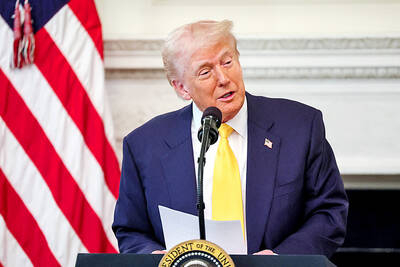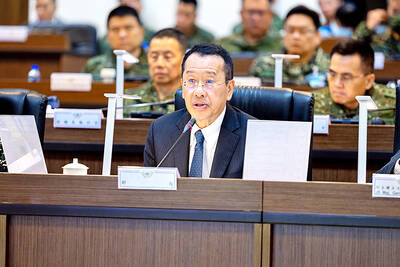US semiconductor giant Intel and Finnish mobile phone maker Nokia announced on Tuesday that they had entered into a “strategic relationship” to develop futuristic mobile computing devices.
Intel, the world’s biggest computer-chip maker, and Nokia, the largest mobile phone manufacturer, said their partnership would seek to “define a new mobile platform beyond today’s smartphones, notebooks and netbooks.”
The alliance between the leaders in their respective fields would enable “the development of a variety of innovative hardware, software and mobile Internet services,” they said in a statement.
Intel dominates the chip market for computers but has had little success in its attempts to break into the mobile phone arena.
The Santa Clara, California-based Intel and Helsinki-based Nokia did not unveil plans for any specific products but said they would collaborate in developing operating systems for the future mobile computing devices using open-source Linux software.
“With the convergence of the Internet and mobility as the team’s only barrier, I can only imagine the innovation that will come out of our unique relationship with Nokia,” said Anand Chandrasekher, a senior vice president at Intel. “The possibilities are endless.”
“Today’s announcement represents a significant commitment to work together on the future of mobile computing, and we plan to turn our joint research into action,” said Kai Oistamo, an executive vice president at Nokia.
“We will explore new ideas in designs, materials and displays that will go far beyond devices and services on the market today,” Oistamo said.
Intel’s tie-up with Nokia comes slightly more than two weeks after the semiconductor maker announced that it has agreed to buy software company Wind River Systems for US$884 million in a bid get its chips into more devices.
Intel said that its takeover of Wind River is part of its strategy to grow beyond its traditional personal computer and server markets and into mobile handheld devices and other systems.

STILL COMMITTED: The US opposes any forced change to the ‘status quo’ in the Strait, but also does not seek conflict, US Secretary of State Marco Rubio said US President Donald Trump’s administration released US$5.3 billion in previously frozen foreign aid, including US$870 million in security exemptions for programs in Taiwan, a list of exemptions reviewed by Reuters showed. Trump ordered a 90-day pause on foreign aid shortly after taking office on Jan. 20, halting funding for everything from programs that fight starvation and deadly diseases to providing shelters for millions of displaced people across the globe. US Secretary of State Marco Rubio, who has said that all foreign assistance must align with Trump’s “America First” priorities, issued waivers late last month on military aid to Israel and Egypt, the

‘UNITED FRONT’ FRONTS: Barring contact with Huaqiao and Jinan universities is needed to stop China targeting Taiwanese students, the education minister said Taiwan has blacklisted two Chinese universities from conducting academic exchange programs in the nation after reports that the institutes are arms of Beijing’s United Front Work Department, Minister of Education Cheng Ying-yao (鄭英耀) said in an exclusive interview with the Chinese-language Liberty Times (the Taipei Times’ sister paper) published yesterday. China’s Huaqiao University in Xiamen and Quanzhou, as well as Jinan University in Guangzhou, which have 600 and 1,500 Taiwanese on their rolls respectively, are under direct control of the Chinese government’s political warfare branch, Cheng said, citing reports by national security officials. A comprehensive ban on Taiwanese institutions collaborating or

France’s nuclear-powered aircraft carrier and accompanying warships were in the Philippines yesterday after holding combat drills with Philippine forces in the disputed South China Sea in a show of firepower that would likely antagonize China. The Charles de Gaulle on Friday docked at Subic Bay, a former US naval base northwest of Manila, for a break after more than two months of deployment in the Indo-Pacific region. The French carrier engaged with security allies for contingency readiness and to promote regional security, including with Philippine forces, navy ships and fighter jets. They held anti-submarine warfare drills and aerial combat training on Friday in

COMBAT READINESS: The military is reviewing weaponry, personnel resources, and mobilization and recovery forces to adjust defense strategies, the defense minister said The military has released a photograph of Minister of National Defense Wellington Koo (顧立雄) appearing to sit beside a US general during the annual Han Kuang military exercises on Friday last week in a historic first. In the photo, Koo, who was presiding over the drills with high-level officers, appears to be sitting next to US Marine Corps Major General Jay Bargeron, the director of strategic planning and policy of the US Indo-Pacific Command, although only Bargeron’s name tag is visible in the seat as “J5 Maj General.” It is the first time the military has released a photo of an active